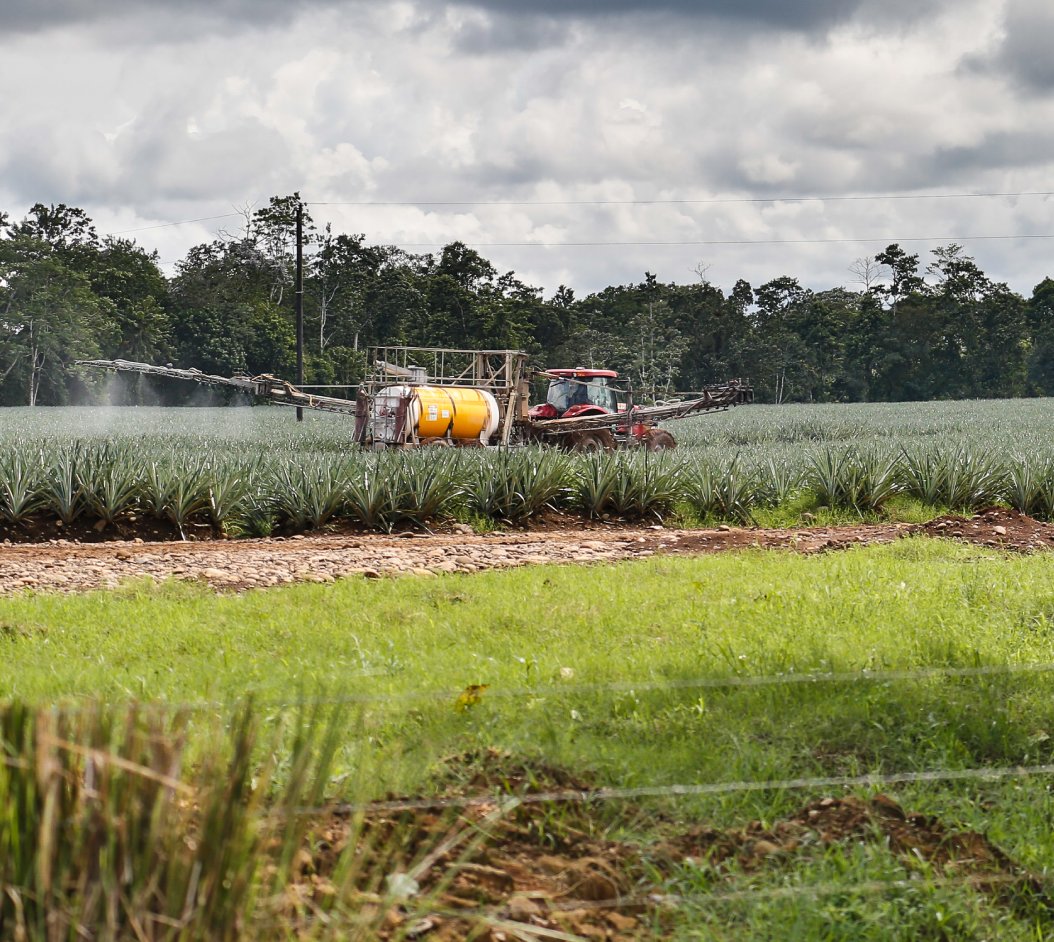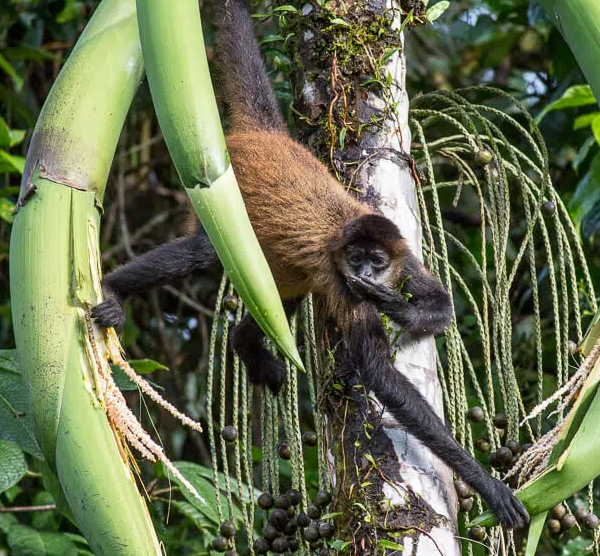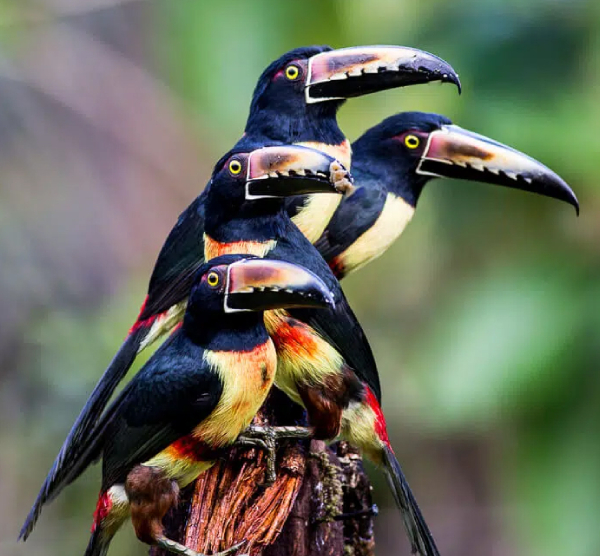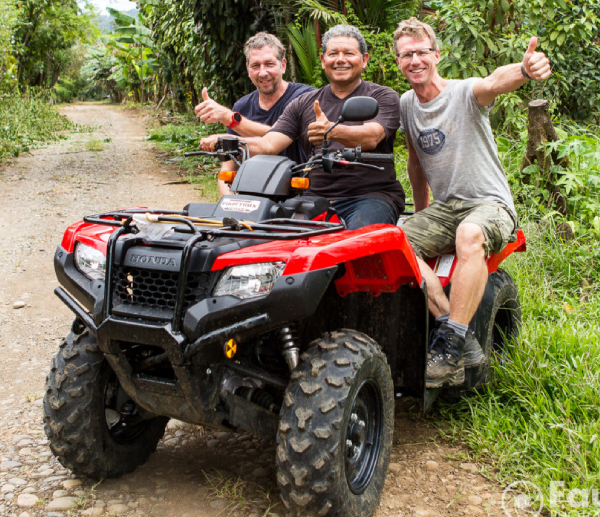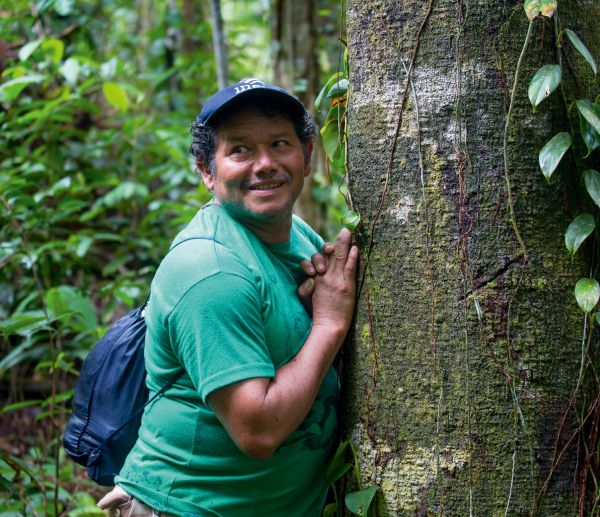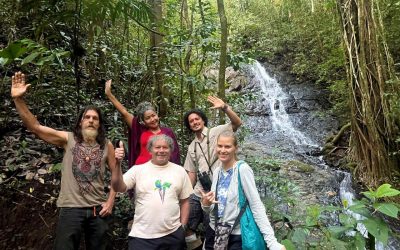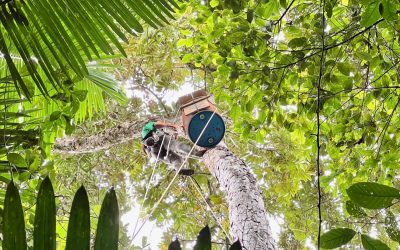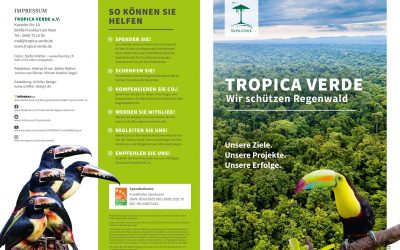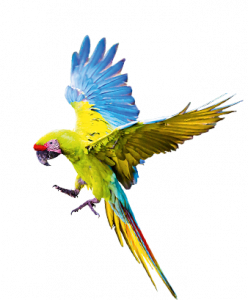RESERVA LAPA VERDE
Protection of the Great Soldier MacawReserva Lapa Verde is named after the Great Soldier Macaw
With a size of up to 85 cm, the Great Soldier Macaw (Ara ambiguus) is one of the largest parrot species. Due to its green coloration, it is called “Lapa Verde” in Costa Rica. Great Soldier Macaws prefer to live in dense tropical lowland rainforests, and the “almendro” (forest almond tree, Dipteryx panamensis) in particular plays a vital role in their diet and reproduction. Around 90 % of the nests of soldier macaws are found in Almendro trees. However, the mighty giant trees only provide sufficiently large nesting cavities after around 60 years. Just as important for the breeding season are the hard-shelled, almond-shaped nuts of the almendros, which the macaws, unlike most other species, can break open with their strong beaks without any problems. The seasonal migration of the birds depends on the regional fruit supply of these and other important food trees that are protected on the Tropica Verde areas.
Threats for
the macaw population
Due to the ongoing destruction of their habitat, the survival of these magnificent birds is highly endangered. The macaw’s former range between Honduras and Colombia has already shrunk by more than 90 %. In the remaining forest areas, poaching and illegal trade also threaten the survival of this species.
Current surveys at 16 locations showed that the number of greater soldier macaws in Costa Rica in 2019 was at least 169 individuals. The Ara ambiguus is on the Red List of Threatened Species and is considered critically endangered according to the IUCN classification. To ensure the long-term survival of macaws in Costa Rica, the last, previously unprotected breeding areas in northern Costa Rica must be saved from destruction.
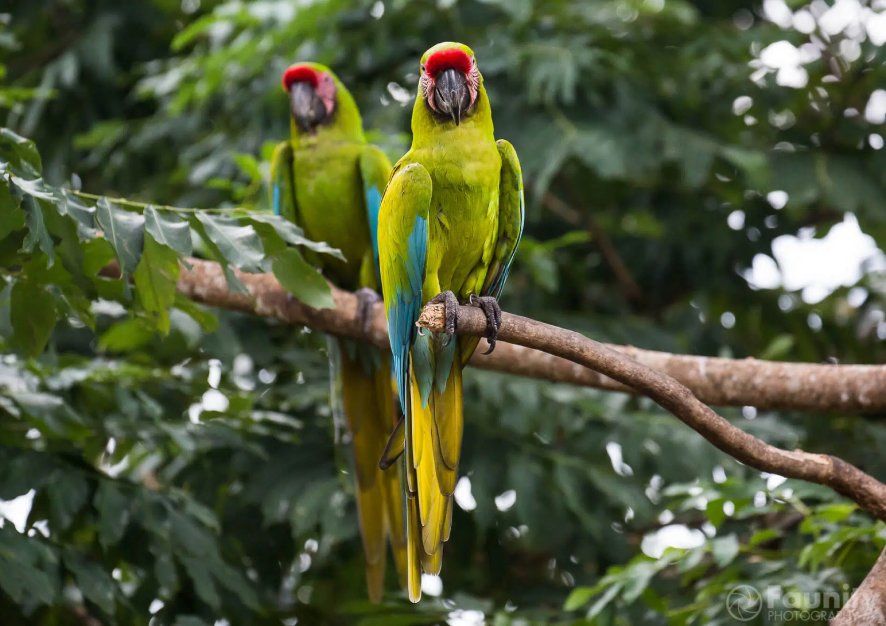
Threats for
the macaw population
Due to the ongoing destruction of their habitat, the survival of these magnificent birds is highly endangered. The macaw’s former range between Honduras and Colombia has already shrunk by more than 90 %. In the remaining forest areas, poaching and illegal trade also threaten the survival of this species.
Current surveys at 16 locations showed that the number of greater soldier macaws in Costa Rica in 2019 was at least 169 individuals. The Ara ambiguus is on the Red List of Threatened Species and is considered critically endangered according to the IUCN classification. To ensure the long-term survival of macaws in Costa Rica, the last, previously unprotected breeding areas in northern Costa Rica must be saved from destruction.
WHAT DOES TROPICA VERDE DO?
- In close cooperation with competent local partners, Tropica Verde was able to acquire a significant 100-hectare forest area in the Maquenque conservation area, a core zone of the macaw breeding area, in 1999 and thus save it from the threat of deforestation.
- The Maquenque protected area forms a central part of the San Juan – La Selva Biological Corridor, which, together with other smaller protected areas and the surrounding buffer zones, covers a total area of 250,000 hectares.
- To prevent illegal logging and poaching, our local game ranger Ulíses Aleman carries out regular patrols in the area. The presence in the area sends out important signals against illegal logging and poaching.
News about this project
Review of the year 2023: How our projects developed
Cooperation, poaching and environmental education 2023 was a very intensive year in terms of our project work in Costa Rica. I've just returned from another 6 weeks in the country shortly before Christmas and have taken away many positive impressions from the...
Can the Great Soldier Macaw still be saved? – Interview with Stefan Rother
We protect the rainforest – Our projects
Our new image brochure is ready. The newly designed brochure provides information about our projects and activities in Costa Rica. We hope you enjoy reading it! Link to desktop view Link to the mobile view
